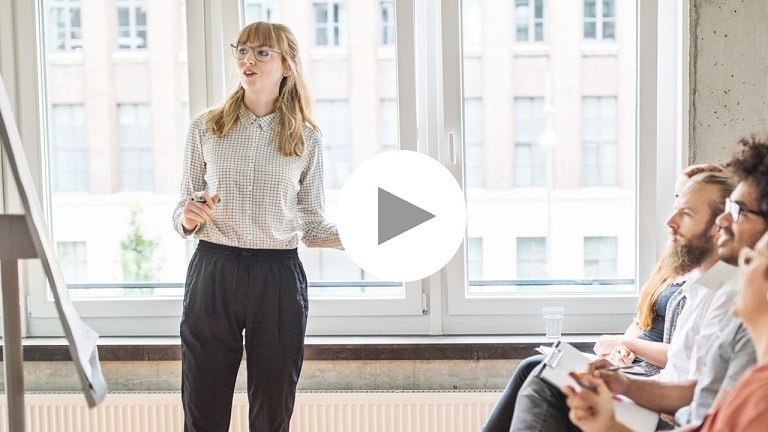RECOMMENDED VIDEO COURSE:
PRESENTATION SKILLS: GIVE MORE POWERFUL, MEMORABLE TALKS
4.6![]()
3,700+ ratings
$199.99
Available on Udemy
Public Speaking Techniques Demonstrated by Barack Obama (Before He Was President)
Here is Barack Obama’s big speech from the 2004 Democratic Convention that put him on the map:
Notice his relaxed body movement and purposeful hand gestures throughout. There are several key strategies that Obama uses for maximum impact on the audience.
Strategic Monotone and Vocal Range
Barack Obama uses monotone speech as a stable “backdrop” in the speech that enables his emphasis to easily contrast against it.
(This is also consistent with the image he wants to have in the public imagination: inspiring and passionate, but also calm and responsible.)
We see this technique in two ways. First, he starts the speech with a relatively monotone voice, and exhibits progressively more range through to the end of the speech.
And second, from minute to minute, he alternates wide range and narrow range, low volume and high volume, to create contrast and keep the listener engaged.
He is not always passionate and excited, nor is he always stable and calm (two mistakes that many speakers make). Instead, he shows variety.
In minutes 3 and 4 he starts to exhibit a little more range as he makes key points. In minutes 6 and 7 the range expands even more, again emphasizing key points.
In minutes 10 and 11 his range expands again, and his volume rises as he talks about the war and soldiers.
Minute 12: more range again talking about the children, elderly, Arabs.
Minute 13 and 14: rising again, probably the most so far, as he talks about uniting the country.
Finally in minute 16 you can hear the passion and emphasis in his voice to wrap it up.

Examples of Hand Gestures
Obama makes hand gestures for emphasis throughout the speech. Notice how his hands underline and draw emphasis to certain points as he speaks, making his speech more impactful.
Right in the first minute as he mentions his presence “being unlikely” on the stage, and begins telling his personal story, he puts his hand on his chest.
Any kind of hand-on-chest or hand-on-heart gesture conveys emotion and a personal story, which audiences love.
He gestures to himself again at minute 3, connecting the idea of a “tolerant America” to himself and his own name.
Around minute 5, he makes a “knocking” gesture as he refers to a “knock on the door.” This kind of thing may seem simple, but consider how many speakers would have just said “a knock on the door” without making that gesture and therefore without as much impact.
At 8:35, he uses his hand and arm movements to create a contrast: he gestures to his right when referring to “companies shipping jobs overseas” and then to his left when referring to “companies creating jobs here at home.”
Again this visual movement helps the audience to better grasp what’s being said, in this case the strong contrast that he is trying to convey.
His go-to gesture in the speech is to reach his hand forward towards the audience. This seemingly small gesture helps him to create a connection with the audience.
The viewer feels that much closer to him than if he had kept his hands to himself or on the lectern.
- You Are Who You Surround Yourself With: 6 Tactics to Build Your Network - December 15, 2021
- Executive Presence: 3 Keys to Communicate Leadership Qualities - December 10, 2021
- How to Think on Your Feet in Meetings and Presentations: 3 Mental Hacks - February 13, 2021
